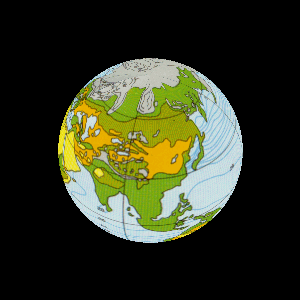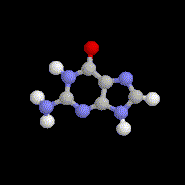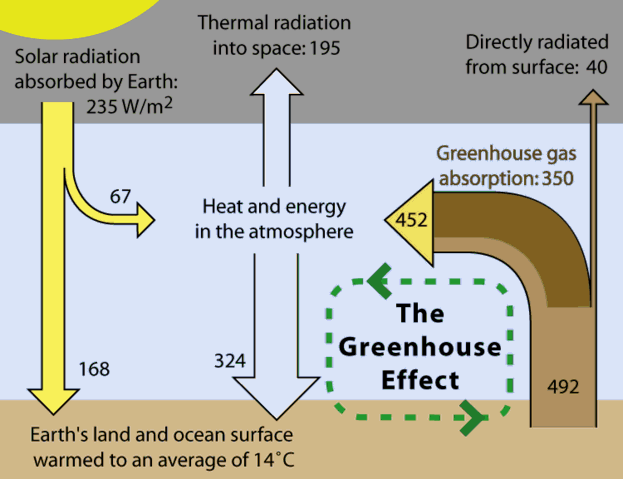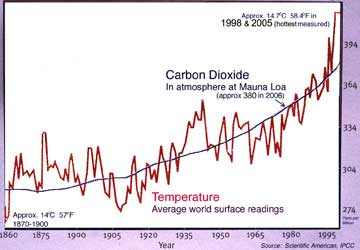Book | Contents | Carbon cycle | Message | Evidence: duration | lesson | summary
![]()
David Archer, The
Long Thaw: How
Humans are changing the next 100,000 years of Earth’s Climate, (Princeton
University Press, 2009.).
Prologue: Global Warming in Geological Time 1-11
Section I: The Present “…a
snapshot of the situation we find ourselves in right now.”
1. The Greenhouse Effect–Fourier & Arrhenius 15-29
2. “We’ve seen it with our own eyes” 30-44
3. Forecast for the Century 45-54
Section II: The Past uniformitarianism & “using the past as a key to
the future.”
4. Millennial climate cycles 57-68
5. Glacial climate cycles 69-77
6. Geologic climate cycles–“the weathering thermostat” rock uptake of CO2 78-90
7. The Present in the Bosom of the Past 91-98
Section III: The
Future–“the deep future of the global warming climate event”
8. The Fate of Fossil co2 ocean uptake of fossil fuel CO2 101-113
9. Acidifying the Ocean 114-124
10. Carbon Cycle feedbacks 125-136
11. Sea level in the deep future –“sluggish ice sheets.” 137-148
12. Orbits, co2, and the next Ice Age 149-157
Epilogue: Carbon Economics and Ethics 158-174
“The global average temperature might be 3ŻC warmer in the year 2100 than it was in 1950. This doesn't sound like much;
. . .on the other hand, the climate changes that civilized humanity has witnessed have all been 1ŻC of less. The Earth has warmed almost this much already because of human activity, but this is nothing compared to the forecast for 2100.”
p.3.
[me–Siry] weather experienced
in the past is no longer what can be expected in the future, see
“The excess CO2 in the atmosphere is absorbed and transformed into carbon in trees, mucky soils, and dissolved in the ocean, and so the warming begins to subside.”
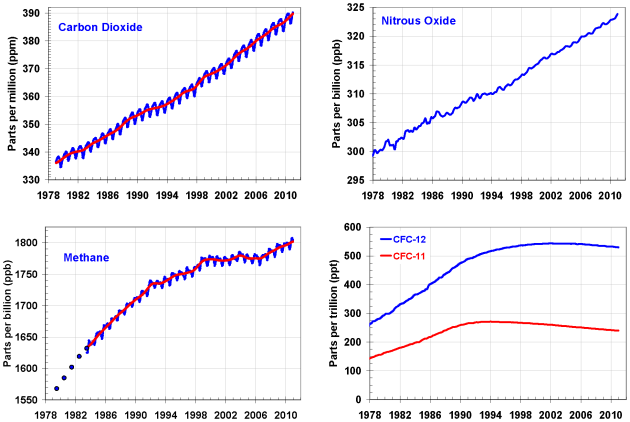
p. 4.
“The atmospheric CO2 peak has a long tail.”
p. 5.
“Mankind is becoming
a force in climate comparable to the orbital variations” that drive the glacial
cycles.”
p. 6.
“The Earth today is colder than the average over geological time.”
p. 7.
“The Eocene Optimum” was a “hothouse climate” 40 million years ago
p. 7.
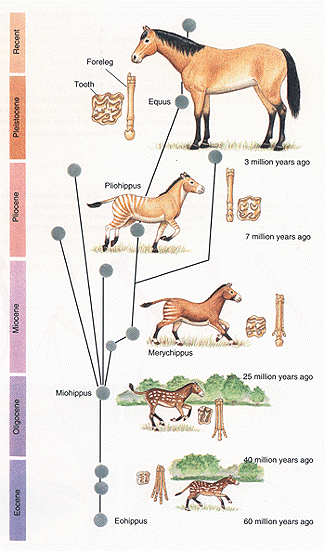 “determined by the solid earth
breathing in and out CO2”
“determined by the solid earth
breathing in and out CO2”
7.
“we push things around about 100 times faster than the natural ones typically do.”
[me}Speed implies the necessity for quick adaptation and “r”
selected species and c-4 plants
if
Greenland melts a 7 meter or 21 foot rise in se level accompanies its loss
(centuries)
p.9
“Why should we mere mortals care about altering the climate 100,000 years from now? Climate change is forecast to the year 2100, a date that very few people reading this book will see.”
p. 9.
“The rules of economics . . . tend to limit our focus to even shorter time frames. Values are related across time using interest rates.…Analyzed within the framework of economics, a climate impact 100,000 years from now becomes laughably irrelevant to any rational decision-making. I’m imagining the financial guys on television laughing ay simply how irrelevant it is,...”
“or the loss of 10% of agricultural production to rising sea levels–that could persist to this day (from 5500years ago)”
p.10.
“Sea level rise could inundate 10% of the carrying capacity of the planet, or more. In the long run, it could be a steep price to pay for a century or so of fossil fuel energy.”
p. 10.
“Persistence is a factor in many other environmental issues. Nuclear power creates waste that must be stored and guarded for 10,000 years.”
“The long lifetime of fossil fuel CO2 creates a sense of fleeting folly about the use of fossil fuels as an energy source.... leaving climate impacts that will last for hundreds of millennia. The lifetime of fossil CO2 in the atmosphere is a few centuries. Plus 25% that lasts essentially forever.”
p. 11.
Book | Contents | Carbon cycle | Message | Evidence: duration | lesson | summary
![]()
PP. 30-44.
Chirico, Song of Love, 1914.
“The melting of Arctic sea ice is the clearest example . . . of a tipping point in global warming.”
p. 36.
“Two-thirds of the sea level rise today is caused by thermal expansion of the warming ocean.”
“Melting glaciers contribute most of the rest.”
p. 36.
Four external agents in and factors for global warming induced climate changes are called climate forcings:
1 heat trapping –greenhouse
gases carbon, nitrogen oxides, water, Freon (+)
2 sulfur dioxide from coal burning (-) reduces temperature
3 volcanic eruptions (-) reduces temperature
4 Changes
in solar intensity sunspots (+) increase / no spots (-) reduces temperatures
p. 37.
“Records of past changes in these climate forcings have been pieced together from measurements in ice cores.”
p. 37.
Only greenhouse gases can & do account for the observed warming since 1950s
p. 42.
“About three quarters of the CO2 will go away in a few centuries, but the rest will remain in the atmosphere for thousands of years.”
“For global warming forecast to be wrong, two phenomenon undreamed of are required, one to cause the warming and the other to take that privilege away from greenhouse gases. This is a tall order.”
p. 43.
“The range of uncertainty that we have about the real world does not encompass the possibility that there will not be global warming from continued carbon dioxide release.”
p. 43-44.
Book | Contents | Carbon cycle | Message | Evidence: duration | lesson | summary
![]()
Chapter III Forecast of the Century
pp. 45-54.
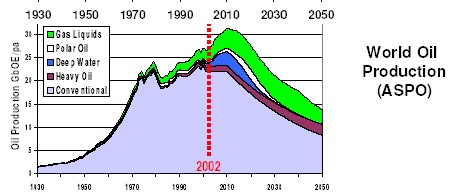
“the fossil fuel era could potentially last until about the year 2300, when coal will begin to run out.”
p. 45.
“it takes centuries for warming to catch up to atmospheric changes, so there will be further warming ‘in the hopper’ even if CO2 emissions are stopped.”
46
“It will be a rainier planet, overall....an increase in extreme rainfall events, strong storms that dump a lot of water in a short time.”
47
“The greenhouse climate has the potential to produce what are called mega-droughts, lasting for a decade of longer.”
47
ocean thermal expansion driving sea level changes
for some centuries to come.
48-49.
Modeling the rate of ice melt of glaciers is weak, but in the past within a century 20 foot changes are not unheard of.
p. 49.
“The first century is an impressive beginning, but the climate effects of global warming will persist for hundreds of thousands of years.”
“we know this because of what we have seen happen in the past.”
p. 54.
Book | Contents | Carbon cycle | Message | Evidence: duration | lesson | summary
![]()
Chapter
IV, number 4 Millenial Climate Cycles
pp. 57-68.
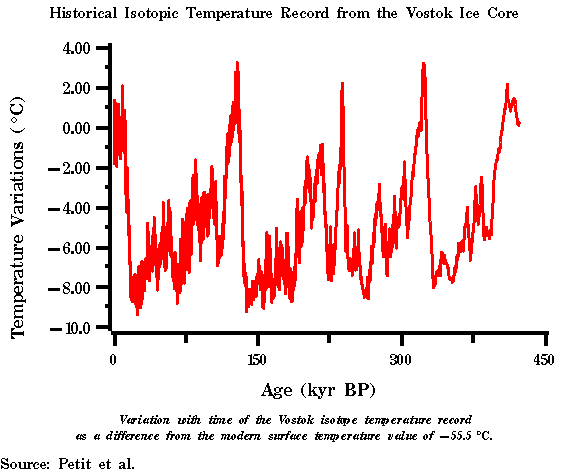
The younger Dryas (sudden warming & sharp cooling – 11,000 -10,000 years ago
pp. 57-58.
“The largest climate change in the last ten millennia occurred 8.2 millennia ago in an event called the 8.2k event. The general climate of the Earth was somewhat warmer than today because of the configuration of the Earth’s orbit about the sun at that time.
Pollen records tell of a sudden cooling and a global tendency for drought that lasted several centuries.”
pp. 62-63.
“The abrupt climate cycles of the glacial climate, consisting of D-O oscillations dancing with Heinrich events, seemed to come without any identifiable climate forcing at all.”
p. 67.
Thermal capacities of “the oceans and the ice sheets hold so much that they take thousands of years to respond fully to changing climate.”
p. 68.
--------------------------------------------------------------
7. The Present in the Bosom of the Past
“The warm world would be something new, a climate such as the Earth has not seen in millions of years.”
CO2 from ice cores shows that CO2 levels are already higher than they have been in over half a million years.”
p. 94.
“the most stable climate in 650 millennia” Holocene = time of human civilization
p. 95.
"Humanity is releasing CO2 into the atmosphere, primarily from fossil fuel combustion, at the rate of about 8.5 billion metric tons of carbon per year."
p. 103.
The Keeling Curve
p. 104
“The long atmospheric lifetime of CO2 implies that global warming will last a long time.. . . . it takes a full century or two for the for a full climate warming response to play out. It takes that long to warm the ocean.”
122
“All of the studies predict that an amount of carbon equal to 10-12% of the fossil fuel CO2 will still remain in the atmosphere after ten thousand years.”
123
Carbon dioxide thumb printsthe loss of ice albedo accounts for about ½ of the warming since the glacial period
other ½ is from accumulating CO2
126
atmospheric increases - CO2 from Antarctic ice cores shows
1800 -- 280 ppm
1960 -- 350 ppm
2013 -- 400 ppm
127
“The terrestrial biosphere might respond to climate on timescales of decades or a century. Ultimately the amount of amplification that the terrestrial landscape can offer is limited by the amount of soil carbon available about 2000 gigatons of carbon.” 0nly ½ would be released – there is 5000 Giga tons of coal left
129-130
“The ocean’s contribution to the carbon amplifier may take millennia to play out
completely.”
131
methane degrades in about
a decade to CO2
132
“Climate records of the past give reason to fear that the carbon cycle could eventually act as an amplifier of human induced climate change."
The biosphere responded (to orbital variation and CO2
amplification in the past) to warming by exhaling CO2 and to
cooling by inhaling."
Global warming [1] is recent climate change
136
11 Sea level and the deep future, 137-174.
"sea level estimates from the past."
137
137
"During the last interglacial"
120 millenia -- 120,000 years ago ∆ by Earth orbital variation
"sea level was 4 to 6 meters (12-18 feet) higher than today."
Carbon dioxide levels were 280 ppm
No everglades and the Key Largo limestone barrier reef was flourishing
(Miocene marine transgression flooded the central Valley of California, no Florida nor Mississippi River valley.)
138
Temperature was 2Ż C warmer than now --- 3 million y a Pliocene
139
"Sea level in the past varied clearly and strongly with changes in global average temperatures."
139
from a 1/2 or .5 meter to 50 meter shift can be anticipated from the current GW
140
[it is a matter of how slowly the sea level responds to ocean thermal expansion and melting of land-based glaciers.]
"thermal expansion of the ocean" contributing to a quarter of a meter in rise
140
"melting land ice could eventually increase the sea level by perhaps 50 meters (150')
"Greenland however is close to the melting point."
141
Uncertainty
"No one predicted the explosion of the Larsen B ice shelf (antarctic) 3/5/2002
141
Greenland's Jacoshavn ice sheet is accelerating movement by two times since 2002
142
West Antarctic ice sheet "would raise sea level by about seven meters." 21 feet
142
Heinrich events "raising sea level several meters within a few centuries."
142
melting ice "lubricates the bed" of a glacier " to lose its footing and plunge into the sea"
142-143
"The surface sends heat down to the base by means of flowing melt water." mulleins
143
"were it to melt" 5
meters as opposed to 7 meters for WAIS (West Antarctic Ice Sheet)
143
"There are five ice streams draining the WAIS into the Ross Sea."
144
The Ross ice shelf sitting on a barrier of land as it does, acts as a barrier or dam to WAIS
144-145
"that would be difficult to forecast in advance, and impossible to stop when underway."
145
"if an ice sheet can collapse in a century as it has in the past, it could do so again in our century." [Heinrich events during the meltwater pulse of the Laurentide de-glacial]
145
"but atmospheric CO2 concentration has never gone up as quickly as it is now."
146
"If the models are too slow, the forecast is too low" for sea level response to the >
146
2000 GtonsC/ 1000 years to 5000 GtonsC/10,000 years to melt the ice
146
"would remain so for thousands of years." translating into a 30 foot sea level rise
147
"It's only real estate after all."
"The 2.2% of the land surface that would be flooded by 10 meters of sea level rise is currently home to about 10 percent of the world's population."
"These properties must have a higher average value o the human race." 10%
147
"Economically, it would mean that this loss would be equal to about one year's worth of economic production . . . .
147
"then the economic hit is only 1% of GDP per year, not too expensive at all."
"Every year the average American emits enough CO2 to ultimate flood 100 square meters (300 square feet x 300 sq. feet), almost 1000 square feet, the size of a luxury Paris apartment."
"the long-term carrying capacity of the planet"
"The selling price is short-term convenient energy. The clearest long-term impact of fossil fuel CO2 (burning) release may be sea level rise. . . "
148
12 Orbits, CO2, and the Next Ice Age 149-157
149
"the ratio of oxygen-18 to oxygen-16 in ocean sediments.
149
"the orbital cycle called the precession of the equinoxes, which has a half-cycle time of about 10 millennia (10,000 tears)
At the end of the line?
150
pollen grains and O isotopes role in the glacial 20,000 years ago for predictions
150
120,000 years ago the ppm = to 280 ppm (pre-industrial levels)
"If it wasn't a drop in CO2 (levels) that caused the ice sheet to form, the other usual suspect would have to be a change in the Earth's orbit."
150
"about three thousand years from now." the summertime sunlight at 65ŻN latitude will be approaching "trigger value" for an ice accumulation (dimming)
151
the trigger model suggests a persistence of the warm interglacial -- though this is open to doubt based on actual variables
151
"but not without a lot of uncertainty."
152
"its too close to call"
? the ice age coming or warm interglacial persisting ?
152
if we miss the "glacial express" this time 50,000 years from now the chance comes around again
"less variability in solar forcing, than usual"
153
"interplay between the tilt (variable 21-25 angle of declination to the plane of the ecliptic) of the Earth and the elliptical orbit (distends)"
153
"it's about the same distance to the Sun all around the orbit"
"he last time the Earth was in this configuration was about 400 millennia ago (400,000 years ago)."
"The
interglacial period at that time was about 50 thousand long."
153
CO2 in our interglacial started out high, then dropped, heading upward again about eight thousand years ago (Younger Dryas?). That is the uptick Ruddiman blames on human agriculture." having liberated methane and carbon from soils & deforestation
154
"Also the ratio of carbon-13 to carbon-12 in atmospheric CO2 through the rise of the last few thousand years seems to indicate that the CO2 did not come from cutting trees, but rather from the oceans."
∆ "humankind has the potential to take control of future ice ages."
154
delaying the onset of glacial
formation by doubling the CO2
154-155
"The ocean stores enough heat to average out these extremes to some extent."
155
"The long lifetime of fossil fuel CO2 in the atmosphere means that human activity will affect the trigger sunshine value for a long time into the future."
156
"the impact we have had on glacial cycle seems to be relatively small."
"We have
released about 300 Gtons of carbon since 1750,"
if we burn 2000 Gtons C we stave off glaciation for 50,000 years
"If the entire coal reserves were used (5,000 GtonsC) then glaciation could be delayed for some,...half a million years."
"on the surface of it, this would seem like a good thing"
156
"The potential dangers of warming are immediate [the benefits too far out]
157
"The practical implication of the trigger model is that natural cooling driven by orbital variation is unlikely to save us from global warming."
••
"by releasing CO2, humankind has the capacity to overpower the climate impacts of the Earth's orbit, taking the reins of the climate system that has operated on Earth for millions of years."
157
“The enormous world altering potential of that gallon of gasoline has taken the reins of Earth’s climate away from its natural stabilizing feedback systems, and given them to us. May we use our newfound powers wisely.”
p. 174.
